VeraCore
Taking warehouse management software to the next level by making complex functionality easy to use.
Role
Lead Designer
Workshop Facilitation
Wireframes
UI Design
Prototyping
Agency
Momentum Design Lab
Industry
Warehouse Management
Client Databases
On this project I worked closely with the clients and engineering team as the solo designer, to set expectations and communicate progress often.
This project had a very aggressive deadline, and I would present work in 1 week sprints. It was beneficial to work directly with the engineering team, as they were able to call out any potential issues, and verify feasibility of features very quickly.
The ask
A graphic warehouse layout builder, and global permissions management system.
Details
- Update to a new version of the software
- Client wanted this to be a revolutionary update
- Multiple points of contact for these specific features to consider, as they’d be used often.
Learning the nuances of warehouse management
To start, we ran a 3 day workshop with our clients, breaking down the details of warehouse management and details to keep in mind, such as ISO9001 regulations.
We tracked many of the pain points of similar apps attempting to achieve accurate layouts, and many of them were highly complex 3D apps, similar to CAD and had a high barrier to use.
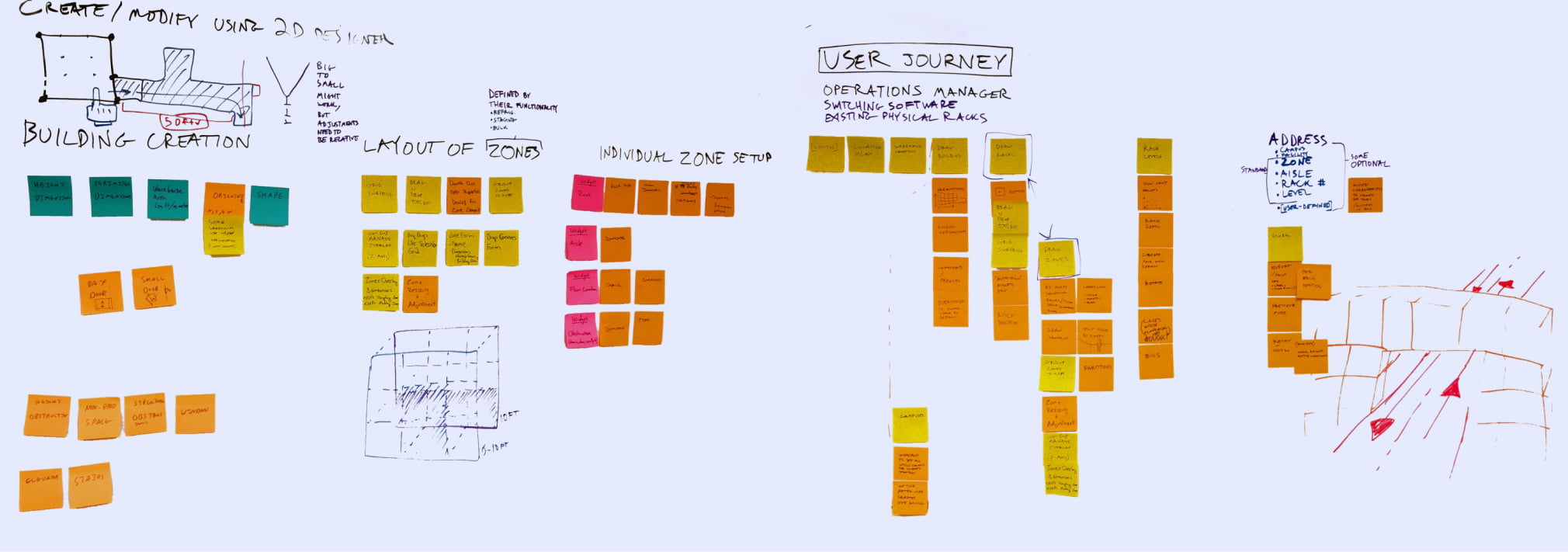

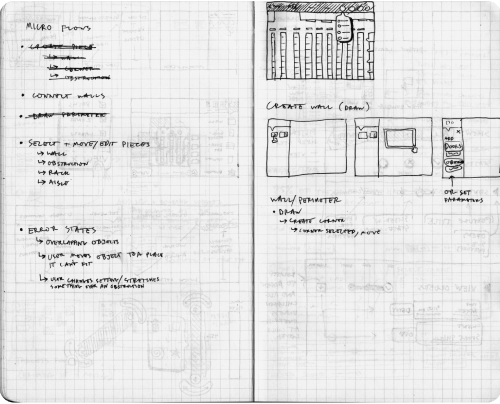
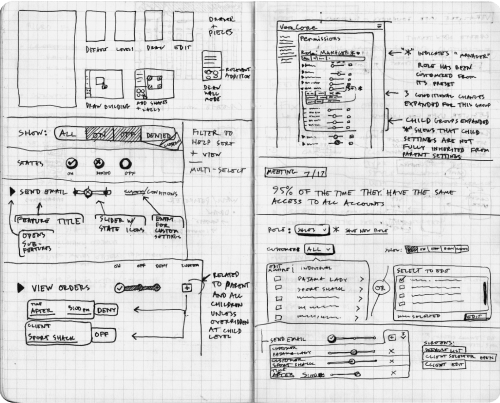
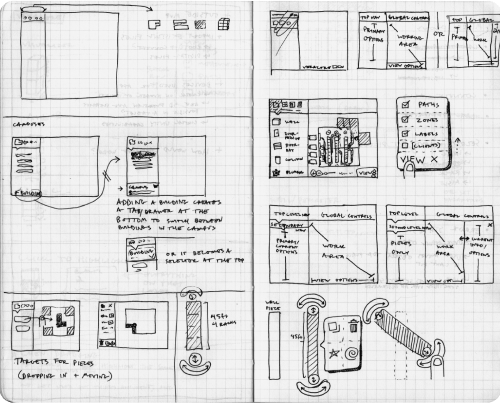
Personas
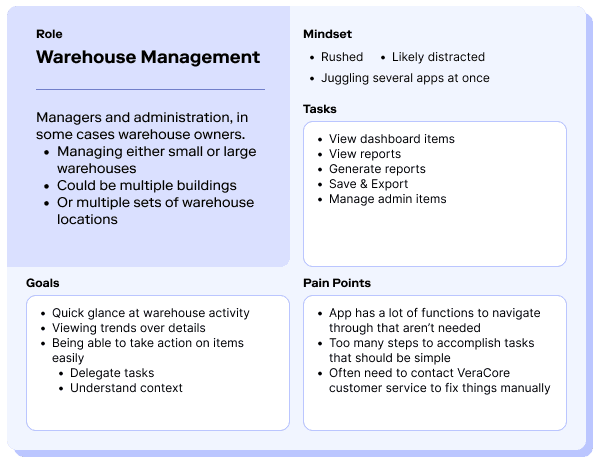

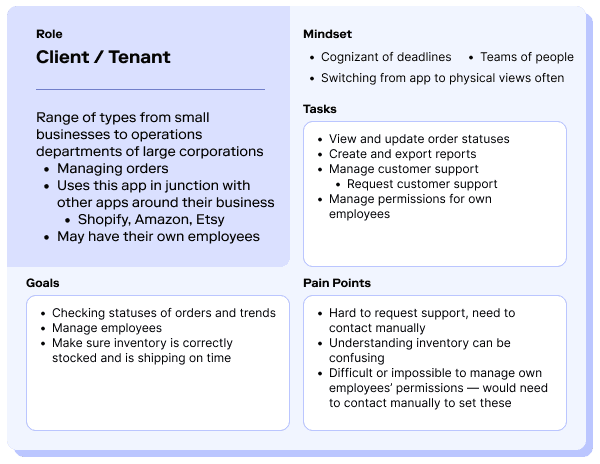
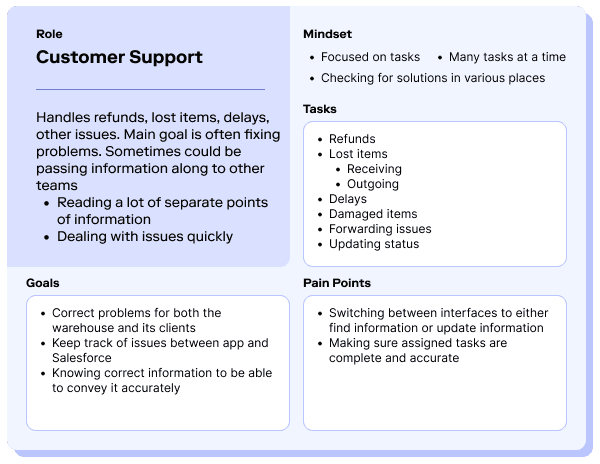
Information Architecture
Phases of MVP Design
1st Part of MVP
Warehouse Builder
To deliver well thought out features, we scheduled our workflow to focus on one segment at a time, to take advantage of the direct contact we had with the client and the engineering teams, in order to hand off work faster and with less need for revisions or reductions.
For the first phase, we started with the most intense feature, the visual layout builder, as that would set the standard for design and revised UI going forward.
The second phase focused on the inventory and client management side of the app, which the majority of the time users would spend in an ordered list view. But one highly complex piece of this puzzle was the permissions builder, that management could use to set permissions through simple logic building methods, based on their own defined criteria.

Error Detection
To adhere to building regulations, an error detection method was designed so if objects were too close to each other, an error would appear.
Inventory management
Being able to snap the views from overhead to rack view helps to track inventory and find items when stocking and fulfilling orders.
Zones and warehouse functions
Being able to create and view the working components of the warehouse from one app helps to plan and reference quickly.
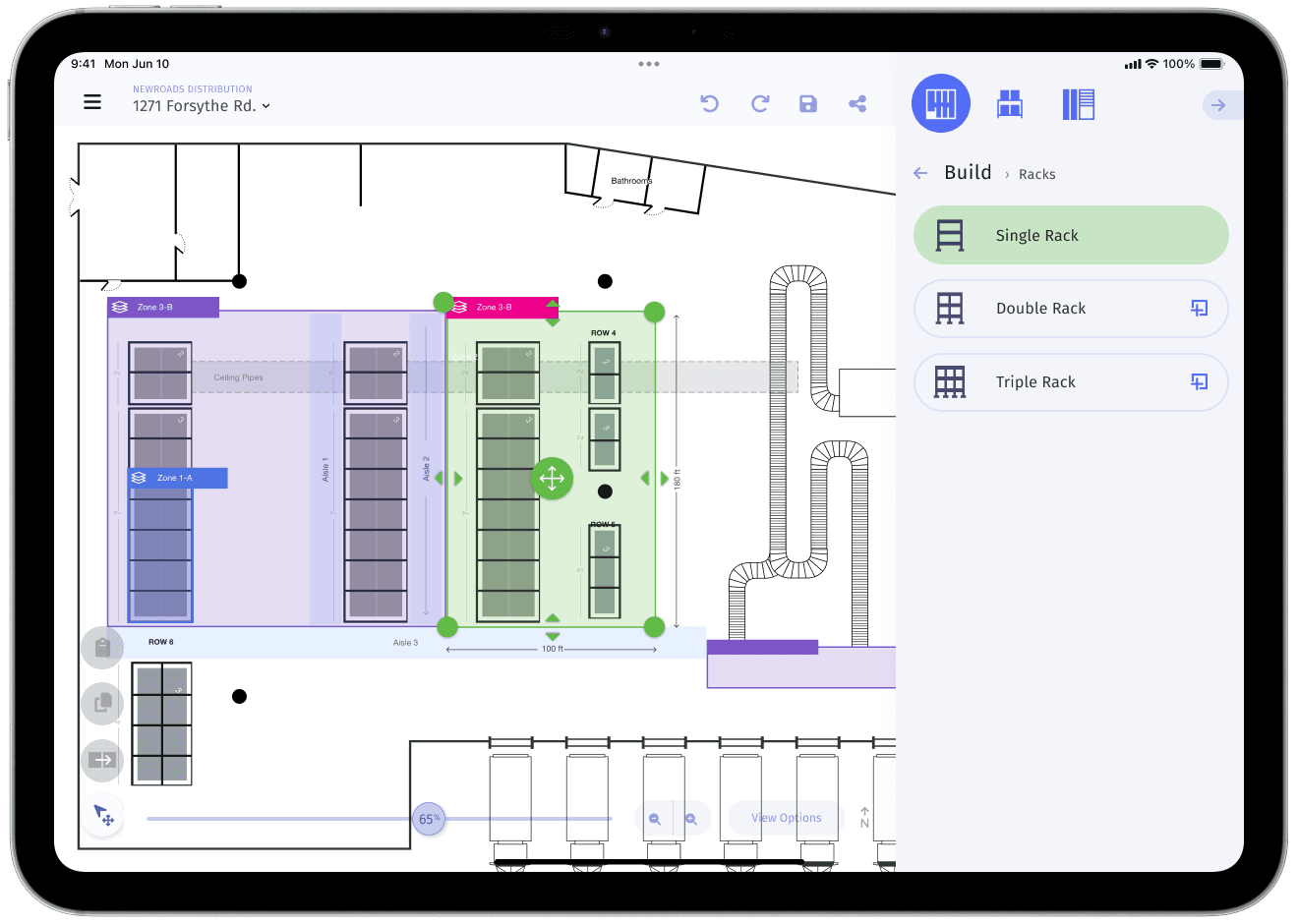
2nd Part of MVP
Permissions Creator
To deliver well thought out features, we scheduled our workflow to focus on one segment at a time, to take advantage of the direct contact we had with the client and the engineering teams, in order to hand off work faster and with less need for revisions or reductions.
For the first phase, we started with the most intense feature, the visual layout builder, as that would set the standard for design and revised UI going forward.
The second phase focused on the inventory and client management side of the app, which the majority of the time users would spend in an ordered list view. But one highly complex piece of this puzzle was the permissions builder, that management could use to set permissions through simple logic building methods, based on their own defined criteria.


Hierarchical Permissions
For the employees in the warehouses and various clients of the warehouses, there needed to be a way to manage what they’re able to view, as one client shouldn’t be able to see another client’s inventory.
In addition to viewing, being able to take certain actions on inventory needed to be restricted as well, for example creating returns, sending emails to buyers, and anything else that could be handled through VeraCore’s software
This feature needed to be simple enough that anyone can use it with little training, but functional enough that it could handle complex sets of logic and hierarchical permissions.
For the design, I used object-oriented programming games for kids as reference, as they were easy to understand, and made the experience more engaging and enjoyable, as this kind of activity can become tedious.
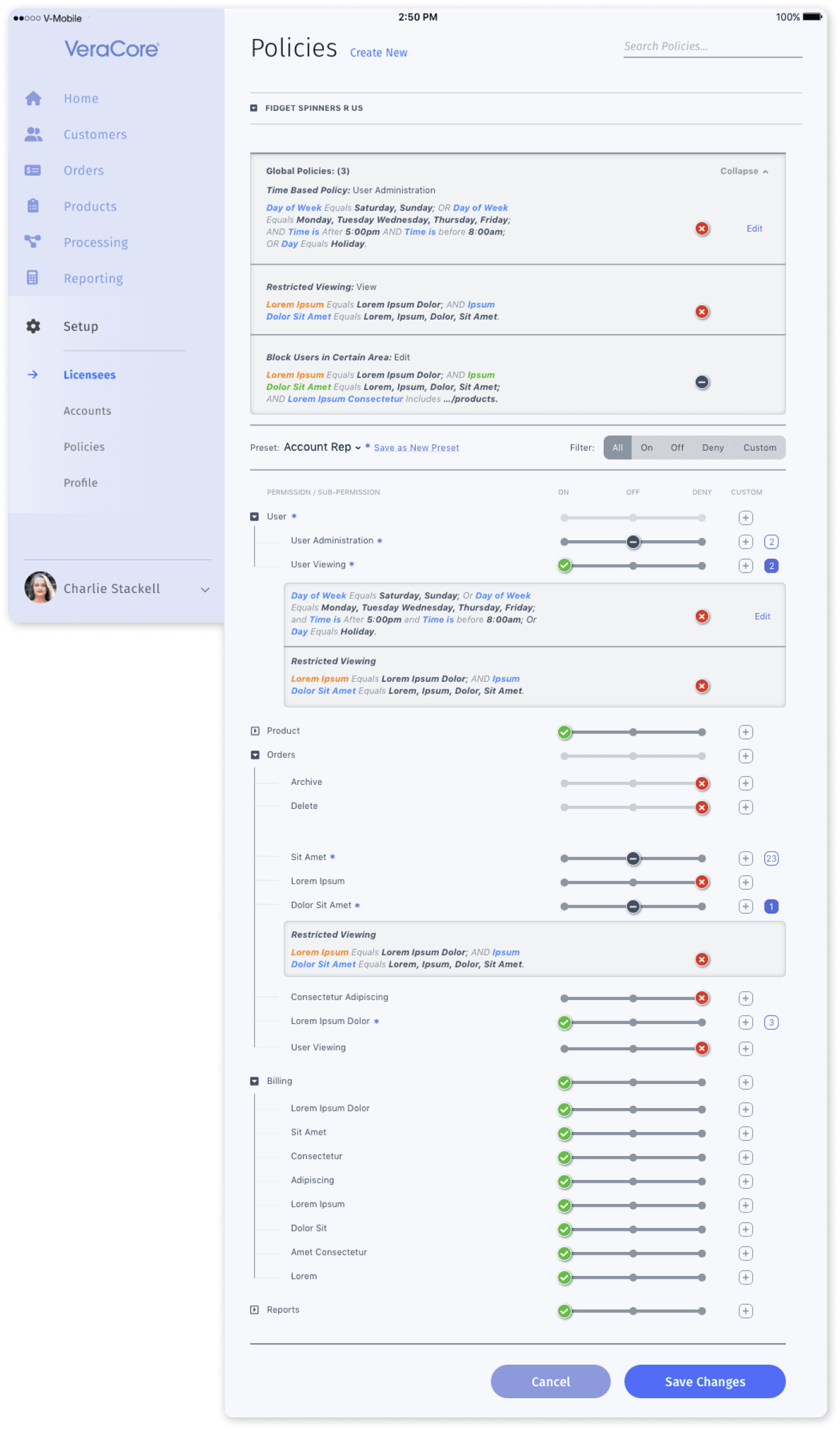
Manage Client Accounts
While the physical layout and inventory within the warehouse is the most important, this software is for warehouses with many types and sizes of clients. Some could be brick and mortar stores, some could be ecommerce businesses, some could even be medical.
The clients themselves would also use this view to keep track of and manage their inventory.
The design needed to align with other apps clients might use, like bookkeeping software, and other sales software backends like Shopify.

